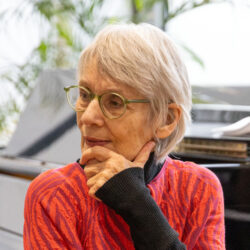Ruptures and ‘the forgotten’ in dance between 1945 and 1980
Irene Sieben
A bombed-out Berlin, then divided by the wall, is shown here in the crosshairs between politics and artistic innovation, between East and West, between classical and modern. It’s shown in the conflict between expressive dance, a fresh enthusiasm for ballet and the skeptically received abstract dance that sought to orient itself towards the contemporary arts.
My research on dance in Berlin between 1945 and 1980 is based not only on relevant literature but also on my experiences as a student of Mary Wigman and her later renegade assistant Manja Chmièl (see film interview with literary scholar Walter Höllerer), as well as my presence in her group Neuer Tanz and my engagement in Berlin’s first independent dance group Motion. What is also important is what I experienced when I was young: Gsovsky’s ballets to contemporary music, and the models of abstraction Merce Cunningham and John Cage, who as guests at the Hebbel Theater dismantled a grand piano. The grounds for renewal in dance were far from fertile in Berlin, or only fed by guest performances at the new Akademie der Künste.
1968, a fateful year: the Wigman Studio closed down. Dore Hoyer took her own life. Chmièl, an avant-garde artist who probably came too early, left Berlin despite having won the Critics’ Prize. The multimedia piece Countdown for Orpheus by Group Motion was a flop. As Wigman was highly praised for it in the USA, she settled in Philadelphia, and continued to infect US dance universities with the Wigman/Chmièl virus. The spin-off company Zero Moving Company was invited as a guest. One of the founders of Tanzfabrik in 1978, Christine Vilardo, was one of the US Motion visionaries. TanzTangente was later also initiated by Wigman students. The free dance scene began to emerge in Berlin, free of subsidies or aesthetic constraints.
